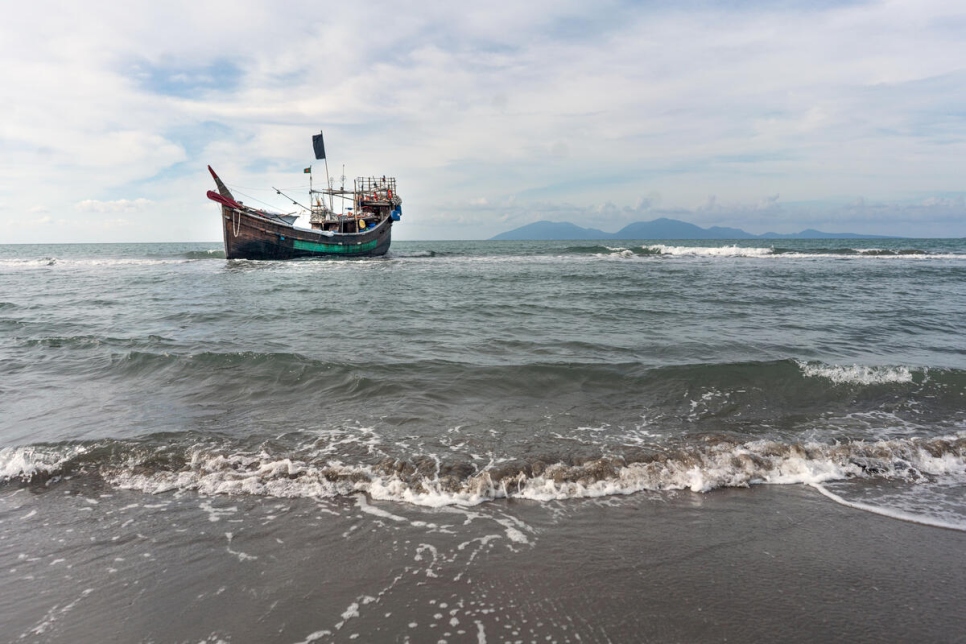The UN says there was an ‘alarming’ rise in Rohingya deaths in 2002 as 3,500 desperate people tried making the deadly sea crossings from Myanmar and Bangladesh.
According to the latest data from UNHCR, the UN Refugee Agency, there was a 360% increase in people making the perilous journey from the year before, when some 700 people made similar journeys.
UNCHR warned that more people would die in the sea without a comprehensive regional response to address the issue.
“UNHCR has recorded an alarming rise in the death toll. At least 348 individuals died or went missing at sea in 2022, making it one of the deadliest years since 2014,” spokesperson Shabia Mantoo told reporters this week.
Around 3,000 individuals who undertook the sea journey disembarked in 2022, primarily in Myanmar, Malaysia, Indonesia and Bangladesh. Nearly 45% of those were women and children.
In the last two months of 2022 alone, boats carrying hundreds of Rohingya disembarked in Indonesia and Sri Lanka. One boat was feared to have sunk in early December, while several boats that departed last month remained at sea as of the end of the year.
READ: The Rohingya crisis — a 30 second explanation
Boats adrift for weeks
Calls by UNHCR to maritime authorities in the region to rescue people in distress have gone unheeded, with many boats adrift for weeks.
Rohingya, facing desperation in Myanmar and Bangladesh, take to the sea on boats for safety, security, reuniting with loved ones, and improved living conditions in other countries.
Among them are victims of trafficking, unaccompanied and separated children, and survivors of sexual- and gender-based violence.
“UNHCR repeats its call for prompt search and rescue and timely disembarkation in a place of safety, and for support to countries where Rohingya refugees are disembarked. We call on countries to redouble efforts to prevent human smuggling and trafficking,” said Mantoo.
“There is also a need for humanitarian responsibility to be more evenly distributed among countries in the region to ensure protection responses are predictable, equitable, and sustainable.
“The region and the international community need to support efforts to address the root causes of displacement in Myanmar. Until these are resolved, refugees will continue to undertake dangerous journeys in search of safety.”
In 2017, Myanmar’s military launched a brutal crackdown on Rohingya communities, forcing hundreds of thousands to flee their homes from the Buddhist-majority nation.
Nearly 1 million Rohingya fled to Bangladesh where they now live in what is widely regarded as one of the world’s largest refugee camps.
Last year, the US formally declared that Myanmar’s repression of the Rohingya Muslim population amounts to genocide and crimes against humanity.
The country is facing genocide charges in the International Court of Justice for its role in the mass displacement of people.
Image: UNHCR/Kenzie Eagan






